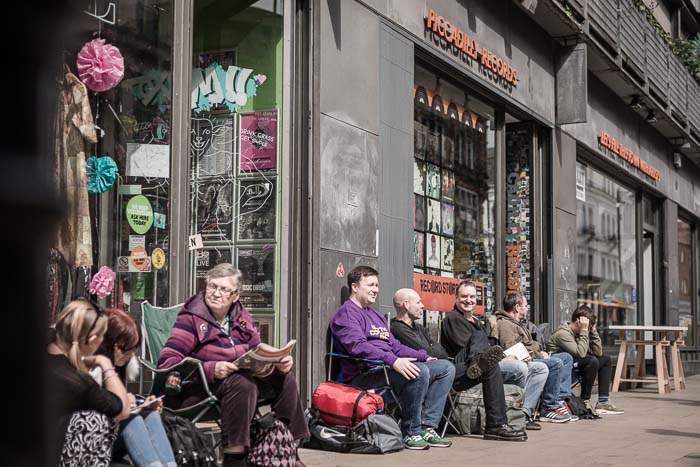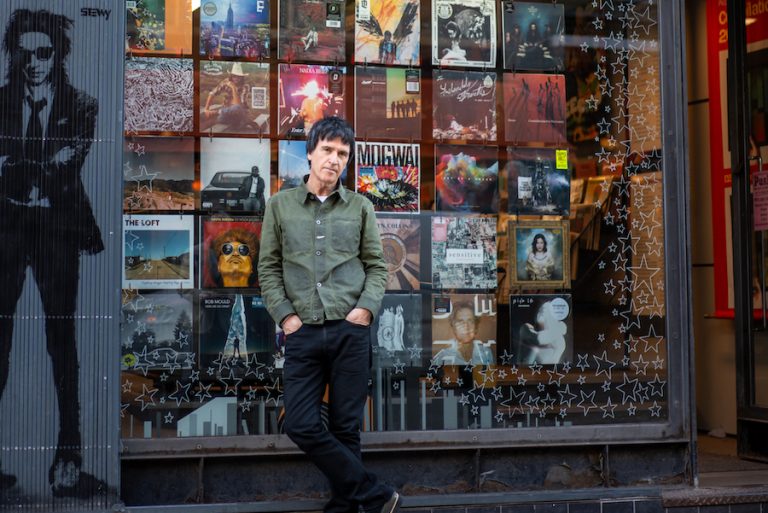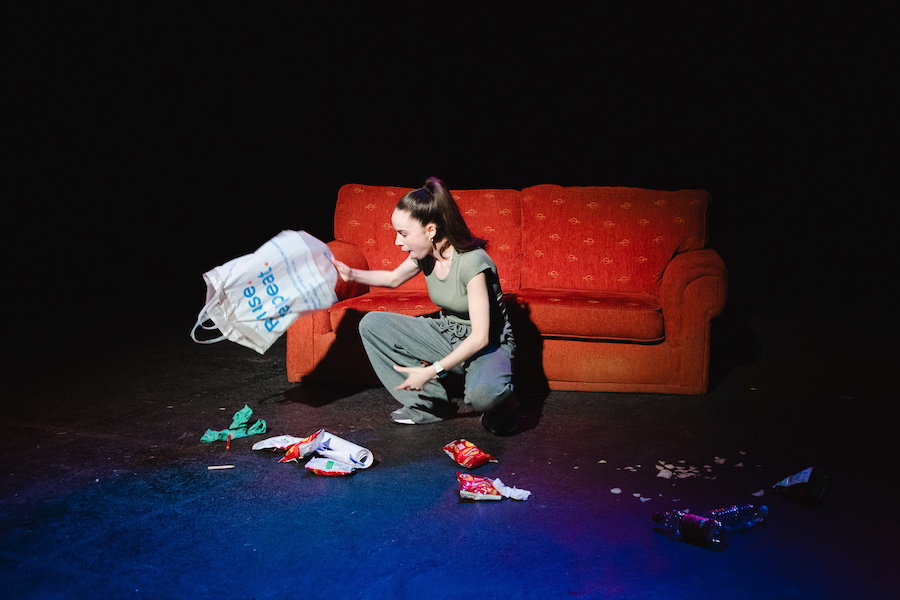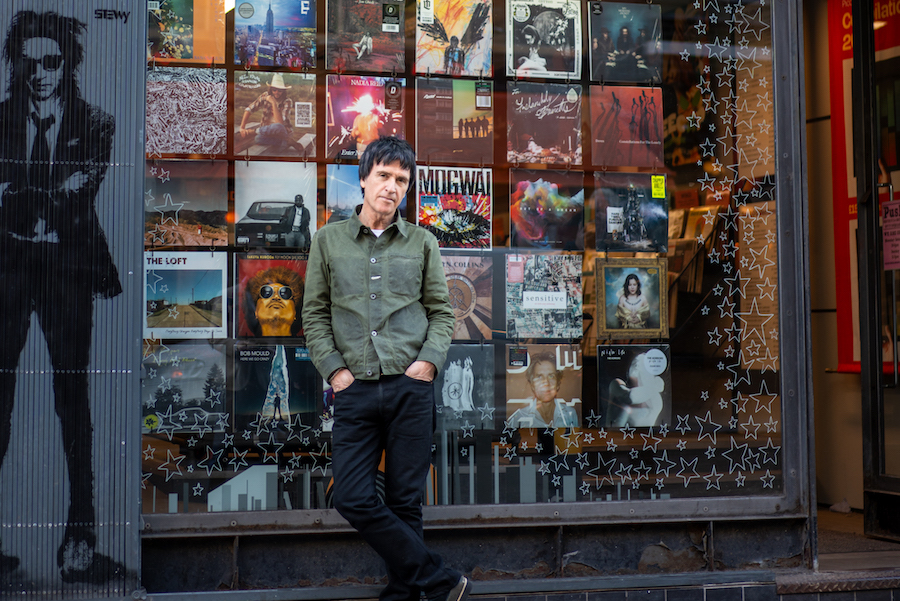Meet the group reviving Manchester’s urban ecosystem through community action
- Written by Thom Bamford
- Last updated 1 month ago
- City of Manchester, Community, Featured, People
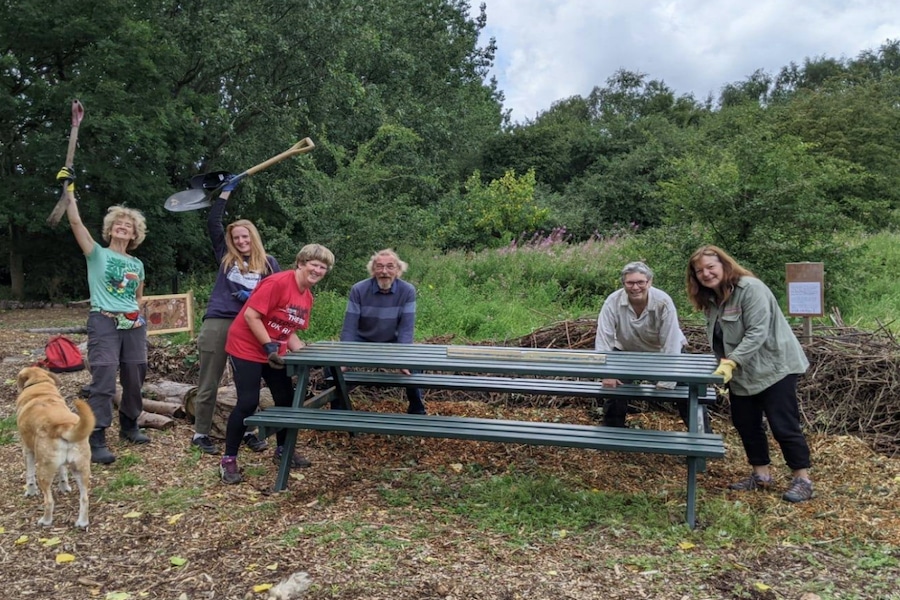
In a long-forgotten corner of Highfield Country Park, where brambles ran wild and litter told a story of neglect, the hum of pollinators had fallen silent.
It was here, over six years ago, that something small but determined began to take root. A movement was born—not just to clean up the mess, but to breathe life back into the land.
At the heart of this transformation is The Bee Sanctuary Movement, led by the unstoppable Sheila Standard.
What began as a simple effort to clear rubbish soon evolved into something extraordinary: a flourishing bee sanctuary where wildflowers sway in the breeze, winding paths welcome wanderers, and volunteers find healing in their connection with the earth.
What started as a simple cleanup transformed into a bustling Bee Sanctuary, where wildflowers grow, new paths wind through meadows, and volunteers share stories of therapeutic connections with nature.
Sheila said: “Wild bees, like all flying insects, are in danger of extinction. We need to act now to save them because all life depends on bees and other pollinators. No Bees, no flowers, no birds, no bats, no predators—our whole ecosystem would collapse.”
The Bee Sanctuary Movement at Highfield Park
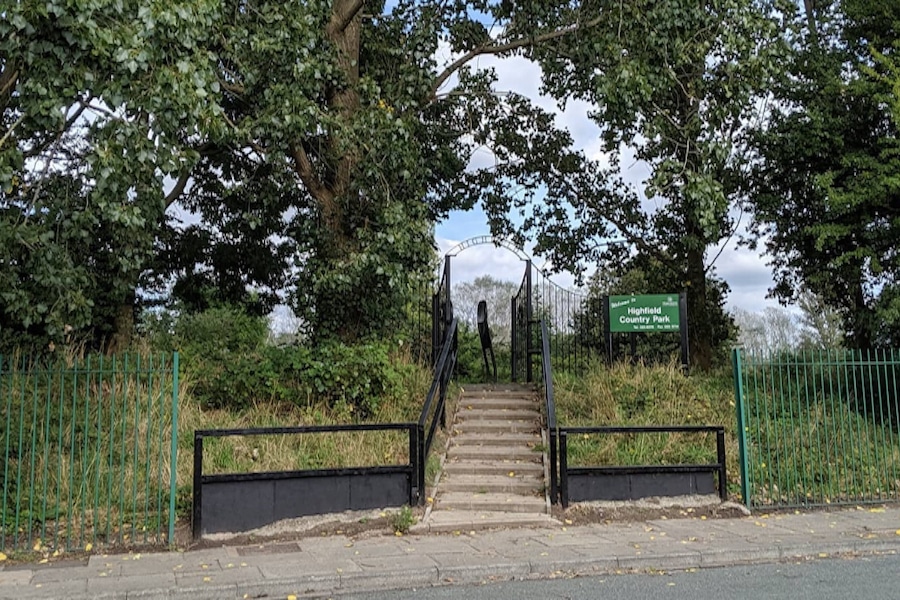
Sheila remembers the moment in August 2019 when she first set eyes on the overgrown land at Highfield Country Park. It had been left to waste, choked with invasive plants and strewn with rubbish. She saw not just what it was, but what it could be.
Determined to bring about change, she and a handful of volunteers got to work. At first, it was simply about picking up litter and cutting back the tangled mess, but soon, they realised they could do much more. They could create a space where wild bees could thrive, where nature could reclaim its place, and where people could reconnect with the world around them.
“We decided to try and create the perfect conditions for bees in a neglected area of our local park, which is also a Nature Reserve,” Sheila recalled. “We created a Bee Sanctuary.”
Clearing the path at Highfield Country Park
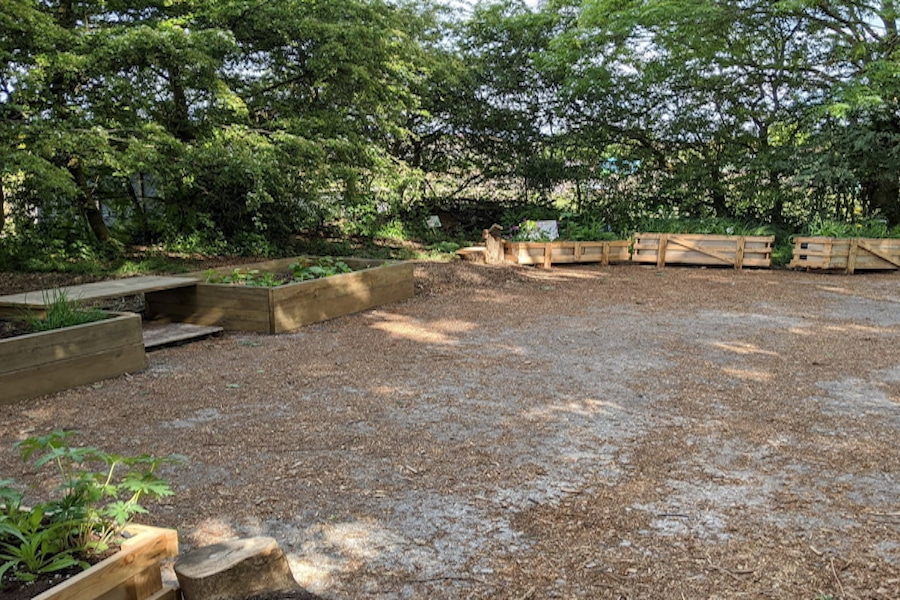
The work was gruelling. Sheila remembers tackling the littered fence line along the park’s southern border, clearing four panels a day out of a total of thirty-seven. “It was tough work,” she admitted, but as she and her fellow volunteers pushed forward, the difference became visible.
The once-cluttered landscape began to open up, revealing the potential hidden beneath the years of neglect.
When Brian and Bernadette joined the effort, the focus shifted to the next challenge: wildflowers. The park, despite its designation as a nature reserve, was lacking in native blooms, stifled by the use of herbicides and the aggressive spread of dominant plant species. Sheila wanted to change that. “I want my park, which is a local Nature Reserve, to have more wildflowers and more biodiversity,” she said.
To make that possible, they advocated for responsible land management. Mowing in autumn, rather than spring, gave wildflower seeds the chance to settle and grow, creating better conditions for bees and other pollinators.
Creating paths and partnerships
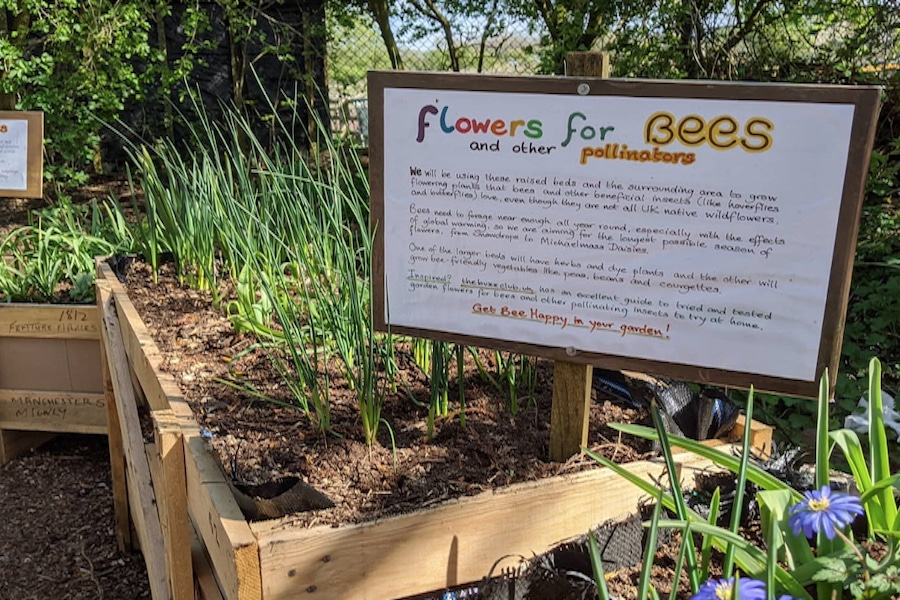
As wildflowers began to take hold, another issue arose. Without designated walkways, the newly sown plants risked being trampled. Paths were needed, but there was no budget for materials. That’s when Sheila had an idea.
“I phoned around tree surgeons asking for wood chipping,” she explained. “Leo Woodfelder responded and has supplied us with all the woodchip and logs we have needed for the last four years.”
With Leo’s help, the sanctuary was able to create meandering trails, protecting the wildflower meadows while inviting visitors to explore. It was a perfect example of how small, local partnerships could have a lasting impact.
Taming the bramble jungle
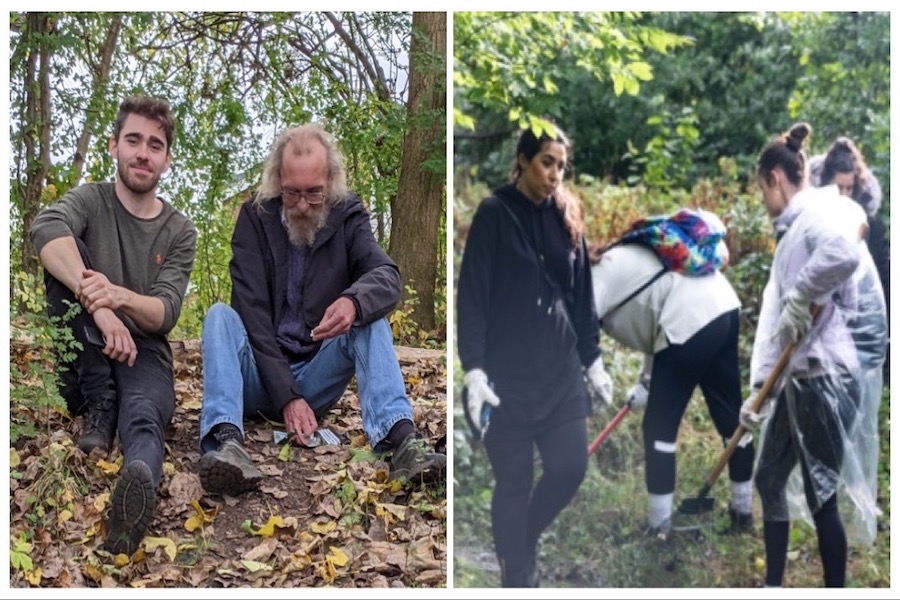
One of the biggest challenges came when the team decided to reclaim an entire acre that had been overtaken by brambles.
The sheer scale of it was daunting. Sheila remembers the moment she heard about the plan. “I was a bit flabbergasted by the extent of her [Nicole’s] ambitions, especially by the thought of clearing literally an acre of bramble!”
But they tackled it head-on. Over the next four years, they transformed the dense thickets into meadows, pathways, and new habitats for wildlife. “Clearing bramble is an amazing experience,” Sheila said. “You find hidden trees and flowering plants. Clearing one tree leads to the next!”
Yet, amidst the beauty they uncovered, there were also stark reminders of human carelessness. Piles of fly-tipped rubbish lay hidden among the brambles, underscoring the need for greater awareness and responsibility when it comes to waste disposal.
Cultivating a community with Bee Sanctuary Movement

At first, Sheila believed volunteers would simply appear when they saw the work being done. It wasn’t until she painted a sign and pinned it to a fence that the first person, Robin, joined. That was just the beginning.
One of their greatest discoveries was dead hedging—a simple but ingenious way to manage organic waste while enhancing biodiversity. Sheila had been wondering what to do with a towering three-meter-high pile of cut bramble. “Dead hedges are the solution!” she exclaimed.
“They stop people and dogs from trampling, and they provide shelter for bugs, frogs, voles, and wrens.”
Far from being an eyesore, the dead hedges blended beautifully into the landscape, offering both protection and habitat.
The Bee Sanctuary movement is born
By January 2020, the project had grown beyond a simple community effort. It officially became a charity, with Nicole stepping in as Chair. “Our mission is to take neglected spaces and increase their biodiversity, and also to educate the community about bees and how to create sanctuaries for wildlife,” Sheila says.
Technology played a key role in expanding their reach, with WhatsApp, Facebook, and a dedicated website bringing more people into the fold.
Then, just as the momentum was building, the world changed.
Seeds of hope amidst challenges
In March 2020, as the country went into lockdown, the sanctuary faced an uncertain future. But instead of pausing their work, they adapted. “We sowed our first wildflower seeds, and lockdown began,” Sheila recalled. While much of the world stood still, the sanctuary continued to grow.
Despite the challenges, they pressed on, creating new habitats, restoring more land, and deepening their commitment to biodiversity. Their efforts did not go unnoticed. In 2022, the Bee Sanctuary Movement won a major biodiversity award from the RHS.
“We did this by moving forward, not being afraid to make mistakes, and always learning,” Sheila said. “From bees to butterflies, bugs to birds, wildflowers to fungi—every discovery adds to our mission.”
The triumph of volunteers with award-winning biodiversity
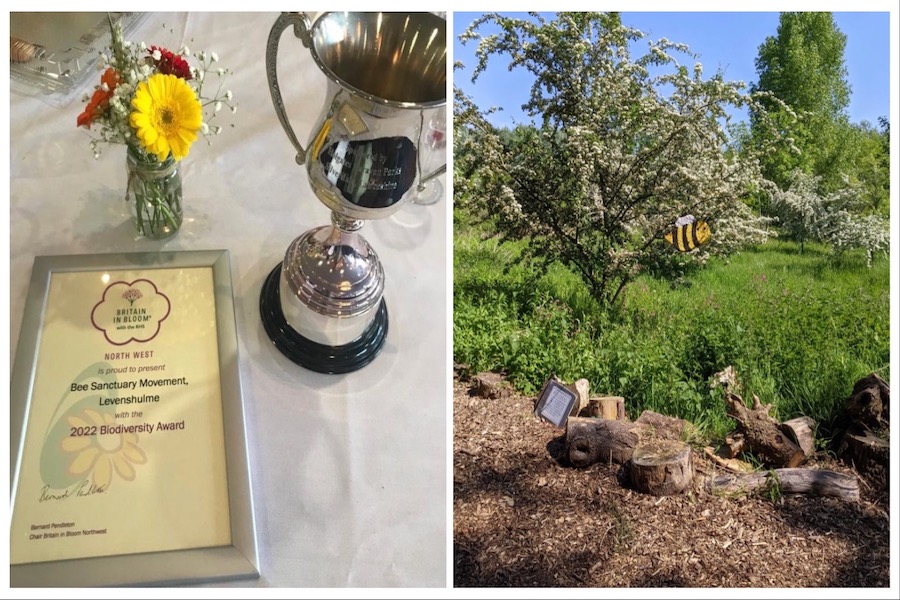
Sheila proudly highlights the driving force behind the Bee Sanctuary Movement: “Still 100% powered by volunteers, we were honoured to receive the RHS Biodiversity Award in 2022.”
This achievement shows their hands-on approach—embracing challenges, learning from experience, and staying committed through sheer Mancunian grit, rain or shine.
Volunteers are at the heart of everything they do, from managing invasive species to sowing wildflower seeds that support biodiversity. Their work includes regular mowing, raking, and maintaining habitat-specific flora, while also collecting and sowing their own seeds whenever possible. The team nurtures the ponds, chips the paths, creates wood piles from fallen trees, and composts collected leaves, all to sustain the sanctuary’s thriving ecosystem.
Beyond hands-on conservation, the volunteers are keen observers of nature, continuously expanding their knowledge through fieldwork and identification apps. Their curiosity spans the spectrum of wildlife, from bees and butterflies to fungi and lichens. Corporate volunteer groups also play a vital role, helping to expand biodiversity efforts into new areas.
A haven fornNature and well-being
Sheila sheds light on the movement’s day-to-day efforts, emphasising the holistic benefits of working with nature. The Bee Sanctuary isn’t just about conservation—it also provides a therapeutic space for volunteers.
Kel, one of the volunteers, shares how the sanctuary has become part of her wellness routine:
“I find so much therapy in nature; being among the trees feels different. At Highfield, I can feel like I’m in the middle of nowhere, even though it’s right on my doorstep. I started cleaning up a little spot in the woods, dreaming of ways to restore it, and when I met Sheila and Robin, they welcomed me with open arms, offering support and guidance. Now, the sanctuary is an integral part of my life. Volunteering here gives me a sense of purpose—it’s comforting to know that I’m making a real difference for nature. I’m proud to be part of this community asset and want to see it flourish.”
For many, the Bee Sanctuary is more than an environmental project—it’s a space of solace, learning, and community.
A space for everyone
The Bee Sanctuary Movement offers a range of facilities, including an off-grid accessible Volunteer Centre featuring a mural by Richard Preston. Visitors can explore simple handmade benches, bike racks, bee hotels, and bird boxes—all designed to support wildlife.
Sheila extends an open invitation: “We have regular volunteer sessions on Tuesdays (10:30 AM) and Sundays (11 AM), and we welcome anyone to join us. Just turn up, and you’ll find our team working somewhere on-site.”
Corporate groups, scout troops, and other organisations can book a session by contacting Sheila at 07891781741.
Experience the Bee Sanctuary for yourself
Nestled at the southern tip of Highfield Country Park, the Bee Sanctuary is open to all. Schools, walking groups, and cycling clubs frequently visit, and the best part? Getting involved is completely free.
Why not take the opportunity to contribute to a thriving green space in your local area? Whether you’re looking to volunteer, learn, or simply immerse yourself in nature, the Bee Sanctuary Movement welcomes you with open arms.
Stay Connected to the Bee Sanctuary
To keep up with the latest updates, follow the Bee Sanctuary Movement on Facebook and Instagram, or visit their website for more information and donation opportunities.
Through the dedication of its volunteers, innovative conservation efforts, and a commitment to education, the Bee Sanctuary Movement is not only re-wilding spaces but also fostering a deeper connection between people and nature.
You can get involved for free, and they have have regular Volunteer sessions on Tuesdays (10.30am) and Sundays (11am), and anyone is welcome to join by showing up at our volunteer sessions.
The Team will be working somewhere on the Bee Sanctuary, so wander round until you find them
Corporate volunteers scouts and other groups need to book a session with Sheila on 07891781741.
Connect with Bee Sanctuary Movement
The Bee Sanctuary Movement extends an open invitation to all who wish to be a part of their mission to re-wild the world.
Through the dedication of volunteers, innovative solutions, and a commitment to education, the movement not only nurtures nature but also fosters a sense of wellness and connection within its community.
- This article was last updated 1 month ago.
- It was first published on 20 November 2023 and is subject to be updated from time to time. Please refresh or return to see the latest version.
Did we miss something? Let us know: press@ilovemanchester.com
Want to be the first to receive all the latest news stories, what’s on and events from the heart of Manchester? Sign up here.
Manchester is a successful city, but many people suffer. I Love Manchester helps raise awareness and funds to help improve the lives and prospects of people across Greater Manchester – and we can’t do it without your help. So please support us with what you can so we can continue to spread the love. Thank you in advance!
An email you’ll love. Subscribe to our newsletter to get the latest news stories delivered direct to your inbox.
Got a story worth sharing?
What’s the story? We are all ears when it comes to positive news and inspiring stories. You can send story ideas to press@ilovemanchester.com
While we can’t guarantee to publish everything, we will always consider any enquiry or idea that promotes:
- Independent new openings
- Human interest
- Not-for-profit organisations
- Community Interest Companies (CiCs) and projects
- Charities and charitable initiatives
- Affordability and offers saving people over 20%
For anything else, don’t hesitate to get in touch with us about advertorials (from £350+VAT) and advertising opportunities: advertise@ilovemanchester.com



Review: Kim’s Convenience at HOME is ‘a moving portrait of immigrant sacrifice and success’

“Manchester is not Britain’s second city, it’s the first” – Jeremy Clarkson
